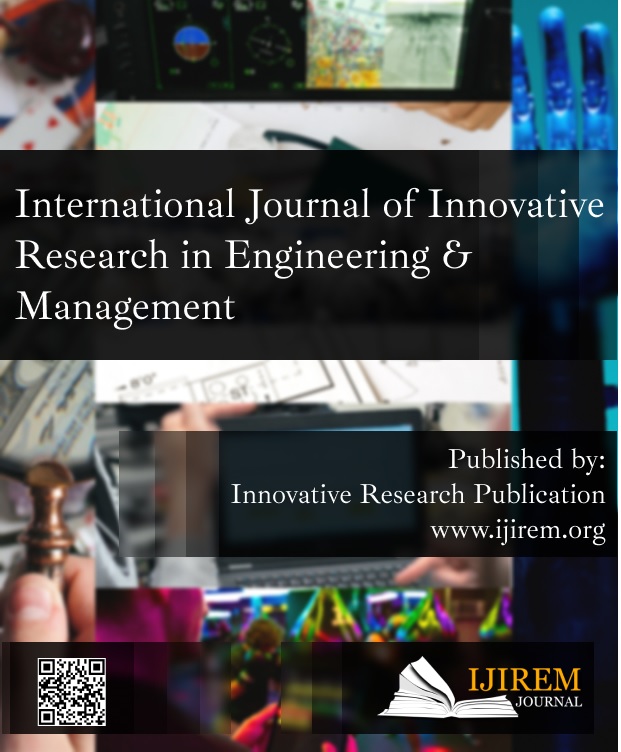Can Poor People's Health Be Harmed by Short-Term Economic Policies: India's Demonetization
Keywords:
Demonetization, Economic Policy, Health, IndiaAbstract
During November 2016, the Government of India (GOI) devalued the extensively used Rs. 500 as well as Rs. 1,000 denomination. To tackle illegal money, counterfeit money, as well as terrorist activities, a short-term economic policy known as notebandi was implemented. The implementation of (Notebandi) was disorganized, perplexing, and difficult, leaving many people without access to cash in their daily life. The poor, who de.pend on cash to survive, have experienced economic alienation and even destitution. In this paper, we argue that currency devaluation has harmed the poor disproportionately, as well as we establish the significant links among devaluation and health problems. Finally, we encourage public health experts to actively monitor and study the health implications of India's recent demonetization, and also future policy measures, to aid governments in creating and implementing economic plans that do not hurt people's health, especially the poor.
Downloads
References
“Top economists are divided on demonetisation.” .
K. Sharma and P. Madan, “Influence of mobile network service quality on m-commerce adoption: A research model,” Int. J. Bus. Innov. Res., 2020, doi: 10.1504/IJBIR.2020.107975.
S. P and S. E, “Demonetization - A Comparative Study With Special Reference To India,” 2017.
M. I. Tabash, M. A. Albugami, M. Salim, and A. Akhtar, “Service quality dimensions of E-retailing of Islamic banks and its impact on customer satisfaction: An empirical investigation of Kingdom of Saudi Arabia,” J.
Asian Financ. Econ. Bus., 2019, doi: 10.13106/jafeb.2019.vol6.no3.225.
R. U. Das, P. Edirisuriya, and A. Swarup, Regional trade and economic integration: Analytical insights and policy options. 2012.
S. Kaur and N. V. Muninarayanappa, “A study to assess the effectiveness of awareness programme in term of knowledge regarding early symptoms of myocardial infarction among bank employees of selected banks at Moradabad, U.P,” Indian J. Public Heal. Res. Dev., 2017, doi: 10.5958/0976-5506.2017.00024.9.
A. Gupta, V. Pant, S. Kumar, and P. K. Bansal, “Bank loan prediction system using machine learning,” 2020, doi: 10.1109/SMART50582.2020.9336801.
J. Drèze and A. Sen, An uncertain glory: India and its contradictions. 2013.
P. S. S. Patil, “Demonitization and its Impact on Adoptation of Digital Marketing in India,” Int. J. Trend Sci. Res. Dev., 2019, doi: 10.31142/ijtsrd23093.
H. Zhu, A. Gupta, B. Majumder, and S. Steinbach, “Short term effects of India’s demonetization on the rural poor,” Econ. Lett., 2018, doi: 10.1016/j.econlet.2018.05.035.
M. Jayanthi and S. S. Rau, “Financial inclusion in India,” Int. J. Appl. Bus. Econ. Res., 2017, doi: 10.12724/ajss.53.3.
H. Daya and P. Mader, “Did demonetisation accelerate financial inclusion?,” Economic and Political Weekly. 2018, doi: 10.13140/rg.2.2.20235.95523.
M. Sharma, “An allusive study of non-performing assets in private and public sector banks in India,” J. Adv. Res. Dyn. Control Syst., 2019.
A. E. Kentikelenis, “Structural adjustment and health: A conceptual framework and evidence on pathways,” Soc. Sci. Med., 2017, doi: 10.1016/j.socscimed.2017.02.021.
S. Jain, V. Jain, and S. Das, “Relationship analysis between emotional intelligence and service quality with special evidences from Indian banking sector,” Espacios, 2018.
S. Nandal, “Demonetization: a paradigm transformation in cashless payment system,” Indian J. Econ. Dev., 2018.
R. Sood and M. Kalia, “Cloudbank: A secure anonymous banking cloud,” 2010, doi: 10.1007/978-3-642-14834- 7_28.
P. Bhardwaj, D. V. Rai, M. L. Garg, and B. P. Mohanty, “Potential of electrical impedance spectroscopy to differentiate between healthy and osteopenic bone,” Clin. Biomech., 2018, doi: 10.1016/j.clinbiomech.2018.05.014.
P. Chaudhary, P. Khati, A. Chaudhary, D. Maithani, G. Kumar, and A. Sharma, “Cultivable and metagenomic approach to study the combined impact of nanogypsum and Pseudomonas taiwanensis on maize plant health and its rhizospheric microbiome,” PLoS One, 2021, doi: 10.1371/journal.pone.0250574.
S. Sahu, D. B. Singh, K. K. Yadav, D. V. Rai, and R. Dixit, “Computational identification and functional annotation of miRNAs in medicinal plant Helianthus petiolaris,” Netw. Model. Anal. Heal. Informatics Bioinforma., 2013, doi: 10.1007/s13721-013-0044-8.
S. Hussain, A. Singh, A. Habib, M. S. Hussain, and A. K. Najmi, “Comment on: ‘Cost Effectiveness of Dialysis Modalities: A Systematic Review of Economic
Evaluations,’” Applied Health Economics and Health Policy. 2019, doi: 10.1007/s40258-019-00485-4.
R. K. Mahat, S. Panda, V. Rathore, S. Swain, L. Yadav, and S. P. Sah, “The dynamics of inflammatory markers in coronavirus disease-2019 (COVID-19) patients: A systematic review and meta-analysis,” Clinical
Epidemiology and Global Health. 2021, doi: 10.1016/j.cegh.2021.100727.
G. A. Kaplan and J. W. Lynch, “Is economic policy health policy?,” American Journal of Public Health. 2001, doi: 10.2105/AJPH.91.3.351.
GoI, “Economic Survey,” Econ. Surv., 2013.
S. Kathpal and M. I. Siddiquei, “Investigating the impact of covid-19 on investor’s bias: An empirical study,” Financ. India, 2021.
M. S. Solanki, L. Goswami, K. P. Sharma, and R. Sikka, “Automatic Detection of Temples in consumer Images using histogram of Gradient,” 2019, doi: 10.1109/ICCIKE47802.2019.9004324.
M. Dadhich, M. S. Pahwa, V. Jain, and R. Doshi, “Predictive Models for Stock Market Index Using Stochastic Time Series ARIMA Modeling in Emerging Economy,” 2021, doi: 10.1007/978-981-16-0942-8_26.
